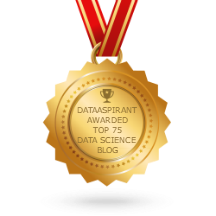Demystifying Neural Networks: A Layman’s Guide

In today's digital age, buzzwords like 'machine learning,' 'data science,' and 'neural networks' float everywhere. For many, especially students, these terms can seem as foreign as a new language. After all, unless you're majoring in computer science, why should you care about such intricate topics?
Neural Networks: A Layman's Guide
Neural Networks: Think Brain, But Digital
Our very own brains inspire neural networks. That's right – scientists looked at our gray matter and thought, "Let's recreate that magic." In its simplest form, a neural network is a series of algorithms intended to recognize patterns.
Think about when you were a kid, learning to identify fruits. You'd see an apple, and your brain would go, "Red, round stem – that's an apple!" Over time, your brain could identify an apple in paintings, cartoons, or even just by its silhouette. That's your brain recognizing patterns. In much the same way, neural networks are trained to recognize data patterns through a process of trial and error.
Speaking of data, students are often bombarded with it, especially in research. Imagine trying to sift through tons of articles, papers, and references. Neural networks can simplify this by picking out patterns and presenting relevant information. It's like having a study buddy who's exceptionally good at pattern recognition.
Layers, Neurons, and Connections: The Basics

Alright, let's dive deeper, but keep things light. Picture a massive sandwich, the kind you’d show off to friends. This sandwich represents our neural network. Each layer of the sandwich, say lettuce, tomato, or cheese, represents a layer in the network. And within each layer, you've got individual pieces – tomato slices or lettuce shreds. These are analogous to neurons.
Now, when you bite into the sandwich, the flavors combine in unique ways, thanks to the myriad connections between ingredients. Similarly, in a neural network, the individual neurons within layers connect to each other. These connections determine how data travels and transforms within the network.
Why should students care about these layers and connections? Imagine you're working on a group project. Each student in the group is like a neuron, and the combined efforts represent the entire network.
Some students take on research (input layer), others draft content (hidden layers), and a few might handle the presentation (output layer). The collaborative nature of this group project mirrors the interconnectedness and layered approach of neural networks.
Training the Network: Learning from Mistakes

The beauty of neural networks is in their ability to learn. When training a neural network, it's fed tons of data. At first, its guesses might be way off. Remember your initial attempts at riding a bike? But with feedback and tweaking, it starts to get things right. This tweaking is done by adjusting the weights of connections between neurons.
For students, this is akin to revising for exams. Initially, you might need help with certain topics. But you get better as you review, practice, and possibly make mistakes (which are simply learning opportunities in disguise). By exam day, you've adjusted your 'neural weights' and are ready to ace that test.
Real-world Applications: More Than Just Theory
Having grasped the basics of neural networks, you might wonder, "Where do we actually see these in action?" You'll be surprised to learn they're all around us, especially in apps and platforms you commonly use.
Take music streaming services like Spotify or Apple Music. Ever wondered how they create those eerily accurate "Recommended for You" playlists? That's neural networks at work. They analyze the patterns in the songs you listen to – the beats, rhythms, genres, and even lyrics. By recognizing these patterns, they predict and suggest songs you'll likely enjoy.
And how about Snapchat or Instagram filters that magically transform your face? Whether it's giving you dog ears, smoother skin, or even changing your hair color – it’s neural networks processing the data in real time. They identify facial patterns and adapt the filter accordingly.
Conclusion
Neural networks might sound daunting, but at their core, they're inspired by processes we're all familiar with. Our brains, the ultimate pattern recognizers, were the muse for this technological marvel.
As students, understanding the basics of neural networks can be fun fact material and provide insights into the world of AI that's shaping our future. So, the next time you hear about neural networks, you'll know it's just a digital brain learning to identify its apples, one bite at a time.
Recommended Courses

Machine Learning Course
Rating: 4.5/5

Deep Learning Course
Rating: 4/5

NLP Course
Rating: 4/5




